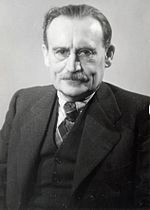How to Pronounce Willem Drees
#50
Most Popular
Boost
Jul 05, 1886 Amsterdam, North Holland, Netherlands Died on 14 May 1988 (aged 101)
Dutch politician
CancerWillem Drees, Date of Birth, Place of Birth, Family, Facts, Age, Net Worth, Biography and More in FamedBorn.com

Dutch politician
Cancer